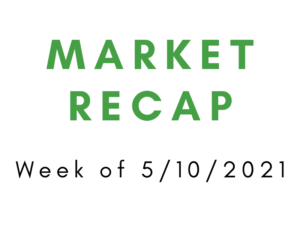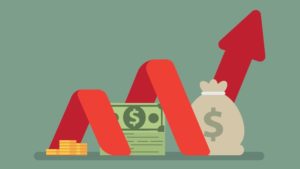In the aftermath of the COVID-19 pandemic, the U.S. economy experienced a period of robust growth and recovery. This economic resurgence, coupled with pent-up consumer demand, resulted in supply chain disruptions and rising prices across various sectors. During this period inflation rates rose to 8.9% as of 2022. The recent surge in inflation sparked concerns about the sustainability of the economic recovery and raised questions about the Federal Reserve’s role in managing inflationary pressures. To address these issues, on July 26th, 2023, the Federal Reserve of the United States raised interest rates to 5.5%, the highest levels in 22 years with the intention to alleviate inflation rates. Although the inflation rates have slowed to 3.2% as of June 2023, Federal Reserve officials reiterated in their post-meeting statement that “inflation remains elevated” and that the Fed “remains highly attentive to inflation risks,” suggesting that another rate hike remains an option.
Raising interest rates is a primary tool that the Federal Reserve employs to combat inflation. By increasing borrowing costs, the Fed aims to curb consumer spending and business investments, thereby reducing demand-pull inflation and decreasing the amount of cash circulation in the consumer market. Additionally, higher interest rates can deter individuals and businesses from taking on new debts, which could help stabilize prices in the economy. Although higher interest rates do alleviate inflation pressures and bring down the prices of consumer goods, there are obvious concerns and drawbacks. For the Federal Reserve, achieving a proper balance between alleviating inflationary pressures and its impact on the overall economy will be a crucial step in the U.S. economy’s recovery.
The decision to increase interest rates may have implications for unemployment and overall economic stability. On one hand, higher borrowing costs discourage businesses from investing in expansion and hiring new workers, leading to a slowdown in job creation. CNN Business believes that “the Fed [has] no choice but to slow inflation because of the tight labor market’s persistent role in pushing up consumer prices”. Jerome Powell, Chair of the Fed hopes to see a broad cooling of the labor market; yet still expresses concerns in the limited improvement in job openings. However, the Federal Reserve believes that tackling inflation proactively can protect the purchasing power of consumers and businesses, supporting economic stability in the long term.
According to the International Monetary Fund, recent hikes in interest rates are likely only going to be temporary in U.S. markets. As inflation is brought under control and excess liquidity is withdrawn from the market, the Federal Reserve is expected to ease monetary policies and revert to pre-pandemic level interest rates. Nevertheless, the future of the U.S. economy remains uncertain, making increased interest rates a highly anticipated topic of discussion in the coming months.
Looking ahead, the Federal Reserve’s interest rate increase may have ripple effects on financial markets. Investors may face adjustments in their investment strategies as higher interest rates can impact asset prices and yields. Moreover, sectors that are more sensitive to borrowing costs, such as real estate and consumer durables, could experience shifts in demand and investment patterns.
The Federal Reserve’s recent decision to raise interest rates reflects the delicate balancing act required to manage the U.S. economy effectively. As the nation recovers from the pandemic and grapples with rising inflation, the central bank must carefully calibrate its policies to address these challenges without compromising economic stability and job growth. Ongoing monitoring, data-driven decision-making, and adaptability will be essential in navigating the ever-evolving economic landscape. By maintaining transparency and employing prudent strategies, the Federal Reserve can continue to play a vital role in fostering a resilient and prosperous domestic market for the benefit of all.







